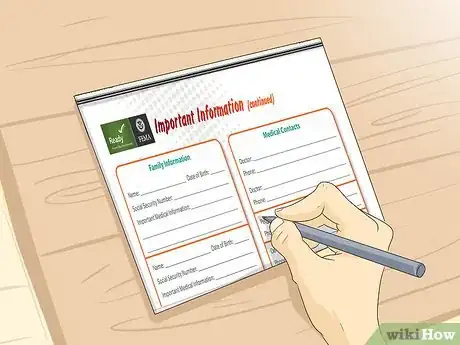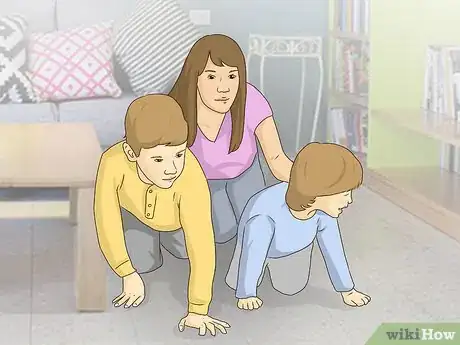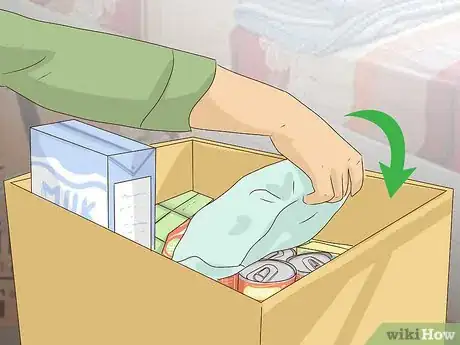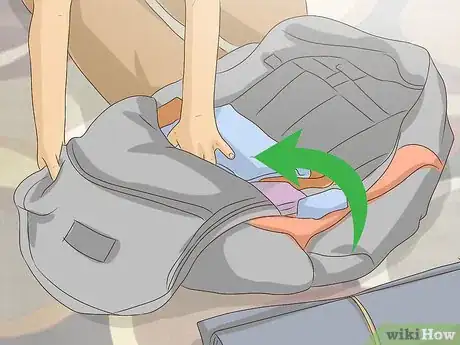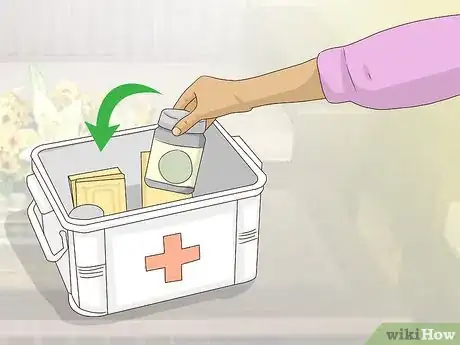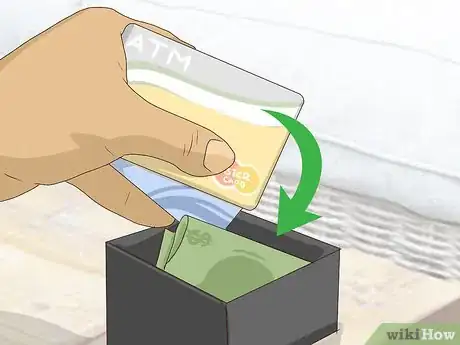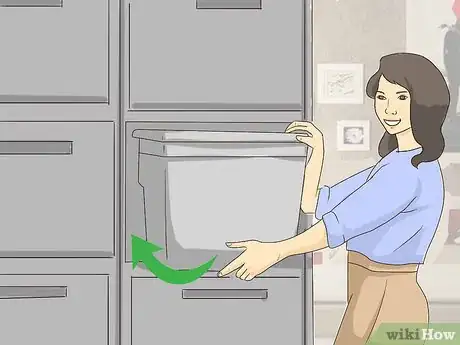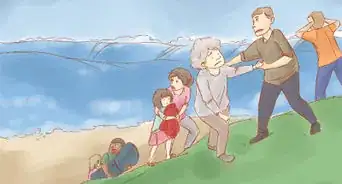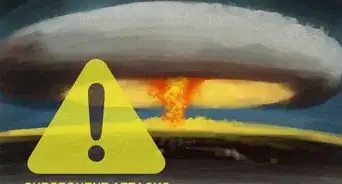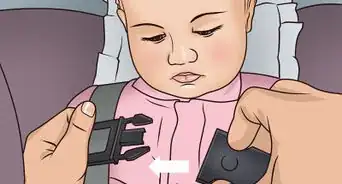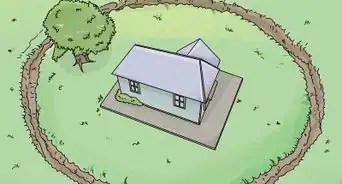This article was co-authored by Direct Relief and by wikiHow staff writer, Sophia Latorre. Direct Relief is an award-winning humanitarian aid organization, active in all 50 states and more than 80 countries. They focus on helping people affected by emergencies and natural disasters. Direct Relief has been highly rated by Charity Navigator, GuideStar, and the Center for High Impact Philanthropy at University of Pennsylvania, for their effectiveness, efficiency, and transparency.
There are 11 references cited in this article, which can be found at the bottom of the page.
wikiHow marks an article as reader-approved once it receives enough positive feedback. In this case, 90% of readers who voted found the article helpful, earning it our reader-approved status.
This article has been viewed 295,398 times.
The thought of a natural disaster can be frightening, but you can prepare yourself and your family with a few simple steps. Though you may not know what kind of disaster will strike or when, if you take the time to prepare for several possible scenarios you’ll be ready in the event of an emergency.
Steps
Creating a Plan
-
1Fill out an emergency plan. Create an emergency plan for your family in case of a natural disaster. Include household information, out-of-town contacts, and school, workplace, and childcare contact information and emergency contingencies. Add your evacuation routes and shelter plans as well. Several websites have templates for emergency plans, like https://www.ready.gov/make-a-plan.[1]
-
2Discuss how to prepare and respond to most likely disasters. Consider scenarios for the events that are most likely to happen in your area. Make sure everyone in your family knows how to react to different disasters, including tornadoes, hurricanes, floods, fires, winter storms, and power outages. Pinpoint the safest spots in your home for each type of disaster.[2]
- For example, make an emergency plan for a flood if you live near a waterway, or an emergency plan for a winter storm if you live in a cold climate.
- The highest level in your home is the safest place during a flood, while the lowest level is safest during a tornado, for instance.
Advertisement -
3Identify 3 ways to get warnings. Sirens are generally insufficient warnings for natural disasters. However, in case of a power outage, you cannot rely solely on your television or landline phone for warnings, either. Sign up to receive emergency alerts from your local government by text message or email. You should also have a battery-operated AM/FM radio (and extra batteries) on hand as well.[3]
-
4Determine the best evacuation routes. Identify all the entries and exits in your home and plan how you will evacuate your home (by car or by foot, for instance). Determine where you will go in the event that you cannot remain in your home or even in your region. Then, map out several routes for getting out of your city and state or region. Be sure to brief all your family members about evacuation strategies and exit plans.[4]
- It’s important to have multiple options in case roadways are damaged during a disaster.
-
5Decide how family members will communicate. Come up with a communication plan in case you are separated in the event of a disaster.[5] You may want to provide each member of the family with a prepaid cell phone and charger, for instance. Make a contact card for each member of the family so they have all the phone numbers and addresses they may need.[6]
- Text messages are more reliable than phone calls during emergencies. Make sure children know how to operate a cell phone and send a text message.
-
6Choose multiple meeting spots. In case all of your family members aren’t able to reach a designated meeting place, you should have several contingencies. Choose one location in your neighborhood or close to your home as well as one that is located out of town. Plan to meet at the closest location in the event of an emergency, and keep the out-of-town location as a backup in case a disaster prevents you from meeting at the primary location.[7]
-
7Run practice drills. It’s important to practice what to do in case of a natural disaster, especially if you have children. Each year, you should do a practice drill for each type of disaster that could occur.[8]
- For example, conduct a home fire drill if you live in an area prone to drought and wildfire.
Packing an Emergency Kit
-
1Pack a 3-day supply of nonperishable food and water. Choose food items with a long shelf life, such as canned goods and packaged pantry items. Opt for items that don’t require refrigeration, but also those that require little cooking in case you don’t have power due to a disaster. Store 1 gallon (3.8 L) of water per person (and per pet) per day. Don’t forget formula and bottles if you have an infant, as well as pet food for any pets.[9]
- Tap water may be unsafe to drink in the event of a disaster, so be sure to include plenty of purified water in bottles or jugs.
- Canned soup, tuna, nuts, dried fruit, beef jerky, nut butter, protein bars, cereal, powdered milk, dry pasta, and packaged crackers are good options.
- Don’t forget to pack a can opener, utensils, dishes, waterproof matches, and a camp stove, if possible.
- At the minimum you should have a 3 day supply of food and water ready, but it’s best to store enough for 2 weeks.
-
2Include clothing, shoes, and toiletries. Pack a 3-day supply of clothing (including multiple layers), socks, and an extra pair of shoes for each member of the family. Toiletries, like soap, shampoo, feminine products, toilet paper, toothbrushes, toothpaste, and deodorant should also be included. Add diapers and wipes if you have small children.[10]
-
3Add shelter and safety supplies. Pack emergency blankets, sleeping bags, and a tent or two in case you can’t stay in your home. A multipurpose tool (like a knife/file/pliers/screwdriver combo), and a whistle would also be handy to have in your kit.[11]
-
4Pack electronics and batteries. Include several flashlights, an AM/FM radio, and extra batteries. You may also want to include a prepaid cell phone with a charger in case your landline or cell phone doesn’t work during a natural disaster.[12]
-
5Include medicine and a first aid kit. Prescription and over-the-counter medicines should be included in your kit. Add a basic first aid kit containing instant ice packs, bandages, antiseptic ointment, scissors, tape, a suture kit, and so on. Pack extra glasses or contact lenses and solution, and any other medical supplies that may be needed, like a cane or hearing aids with extra batteries.[13]
- You may want to include a field medicine handbook as well as a veterinary medicine handbook if you have pets.[14]
-
6Add cash, maps, and spare keys. It’s a good idea to store some cash in your emergency kit. Add a mix of small and large bills in case the banks or ATMs are closed. You should also include maps of the area as well as a spare house and car key.[15]
-
7Store the kit in a cool, dry place. To make sure your food and water last as long as possible, don’t store your kit near direct sunlight, excess moisture, or fluctuating temperatures. The ideal temperature range is from 40° to 70° F (4° to 21° C). While bathrooms and kitchens aren’t great options, basements and closets will do just fine.[16]
- You may choose to prepare a second kit and store it in your car, if desired.
-
8Put important papers in a fireproof and waterproof lockbox. Important papers could be lost in a natural disaster, so fill the box with copies of each family member’s ID as well as birth certificates, passports, deeds, and titles. You could also include insurance paperwork, immunization records, and a copy of your family emergency plan. Add a list of phone numbers and addresses for family members and other important contacts, too.[17]
- Keep both the box and key in your emergency kit.
- Alternatively, you can scan important documents and store them on memory stick inside of a waterproof container in your kit.
-
9Rotate the items regularly. To ensure the clothes and shoes fit and the food and medicine aren’t expired, you should rotate out the items every year or two. Purchase new supplies for your packs and use the existing supplies for your day to day needs.[18]
Monitoring Potential Disasters
-
1Recognize potentially threatening situations. Watch news and weather reports in your region so that you can be aware of potential disasters in the area. You can also download apps for your smartphone, like Natural Disaster Monitor or Weather Underground, that will alert you of potential disasters near your location.[19]
-
2Prepare family members for what may happen. If your family is at risk for exposure to a natural disaster, explain to them what is happening. Review your emergency preparedness plan so that everyone knows what to do in the event of a disaster. Make sure you are prepared to either shelter in place or evacuate, if necessary.
-
3Track the progress of imminent disasters. Check back with your news station frequently so that you will be aware of changes in weather or conditions that could alter the course of a disaster. Sign up to receive alerts or updates from your local government or weather service so that you will be well informed of what’s happening.
-
4Evacuate before disaster strikes, if possible. If danger is imminent in your area, evacuate before it strikes. Your local government or authority may order evacuations if a natural disaster is looming, so be sure to follow their instructions. If you aren’t able to evacuate, shelter in place until it is safe to leave the area.[20]
Warnings
- Candles, lanterns, and flame lamps are for outdoor use only. They should not be used indoors, especially if you have a gas stove or a gas heater.⧼thumbs_response⧽
- If you are plugging your generator into your power supply, make sure you turn off the main breaker and keep the generator outside.⧼thumbs_response⧽
References
- ↑ https://www.fema.gov/media-library-data/1440449346150-1ff18127345615d8b7e1effb4752b668/Family_Comm_Plan_508_20150820.pdf
- ↑ https://www.cdc.gov/disasters/index.html
- ↑ https://www.ready.gov/alerts
- ↑ https://www.ready.gov/evacuating-yourself-and-your-family
- ↑ https://www.ready.gov/make-a-plan
- ↑ https://www.cdc.gov/phpr/areyouprepared/plan.htm
- ↑ https://www.cdc.gov/phpr/areyouprepared/plan.htm
- ↑ https://www.cdc.gov/phpr/areyouprepared/plan.htm
- ↑ https://www.cdc.gov/disasters/foodwater/prepare.html
- ↑ https://www.cdc.gov/phpr/areyouprepared/kit.htm
- ↑ https://www.cdc.gov/phpr/areyouprepared/kit.htm
- ↑ https://www.cdc.gov/phpr/areyouprepared/kit.htm
- ↑ https://www.cdc.gov/phpr/areyouprepared/kit.htm
- ↑ https://www.moneycrashers.com/prepare-natural-disaster-emergency-preparedness/
- ↑ https://www.cdc.gov/phpr/areyouprepared/kit.htm
- ↑ https://www.cdc.gov/disasters/foodwater/prepare.html
- ↑ https://www.cdc.gov/phpr/areyouprepared/kit.htm
- ↑ https://www.cdc.gov/phpr/areyouprepared/kit.htm
- ↑ https://www.ready.gov/risk-assessment
- ↑ https://www.usaa.com/inet/pages/advice_disaster-orderedtoevacuate?akredirect=true
About This Article
The best way to be prepared for a natural disaster is to fill an emergency pack with clothing, toiletries, medications, money, bottled water, and non-perishable food. Place it in an easily-accessible spot in your house away from sun, heat, and moisture. For tips on how to create an emergency plan, stay alert to disaster warnings, and get in touch with family in case of emergency, read on!
